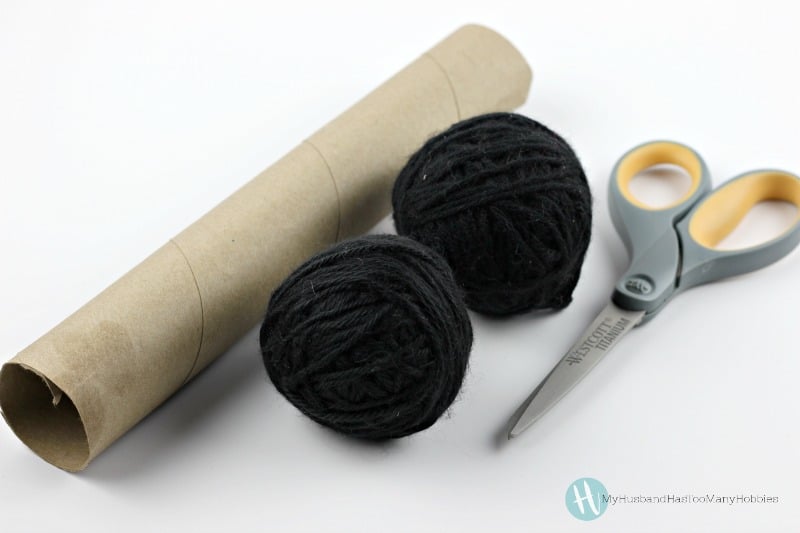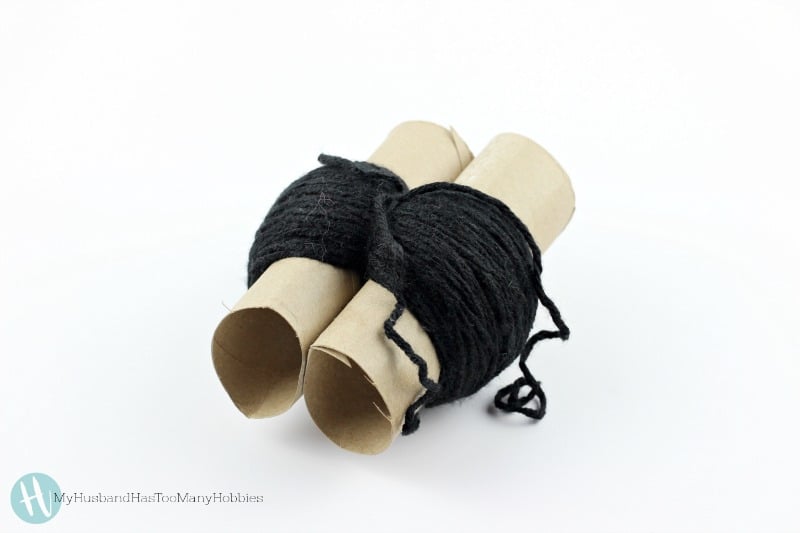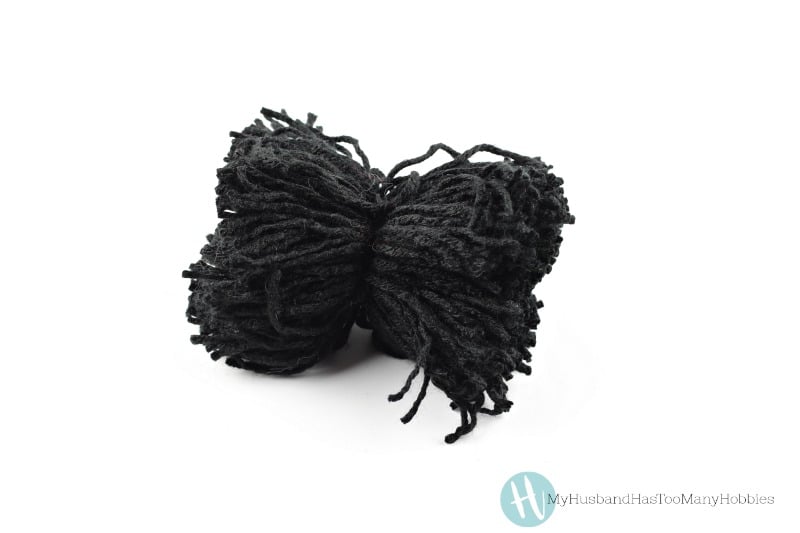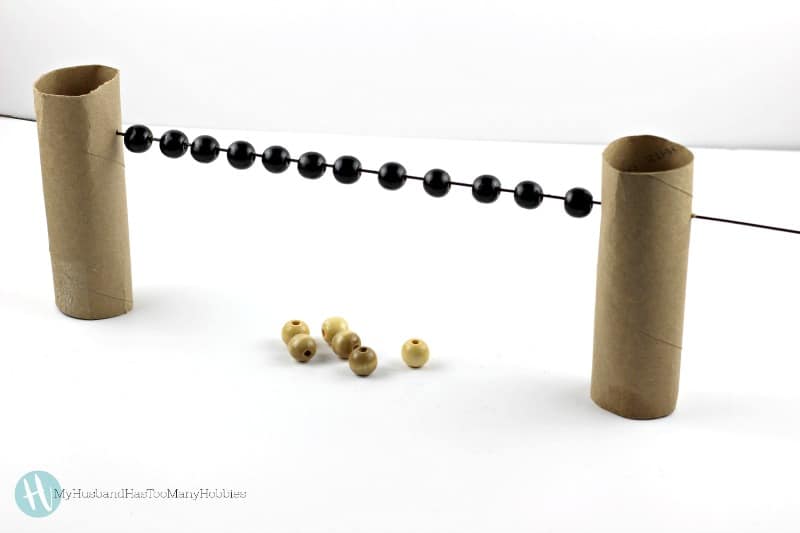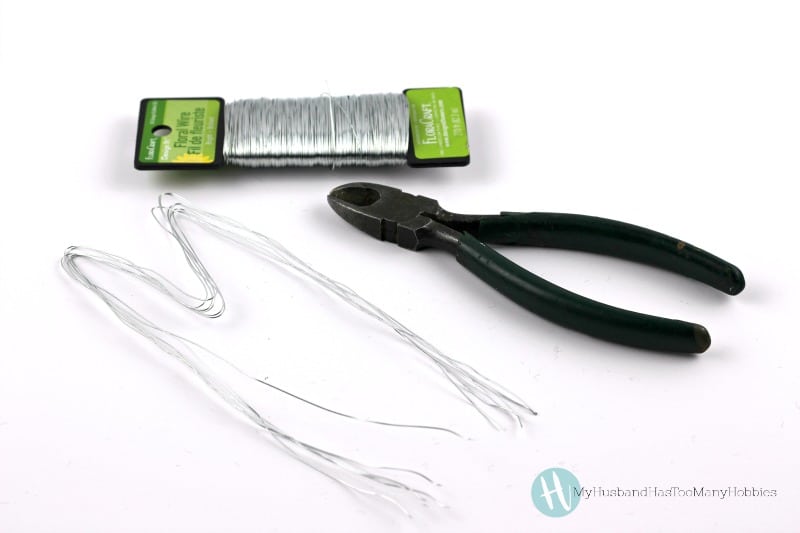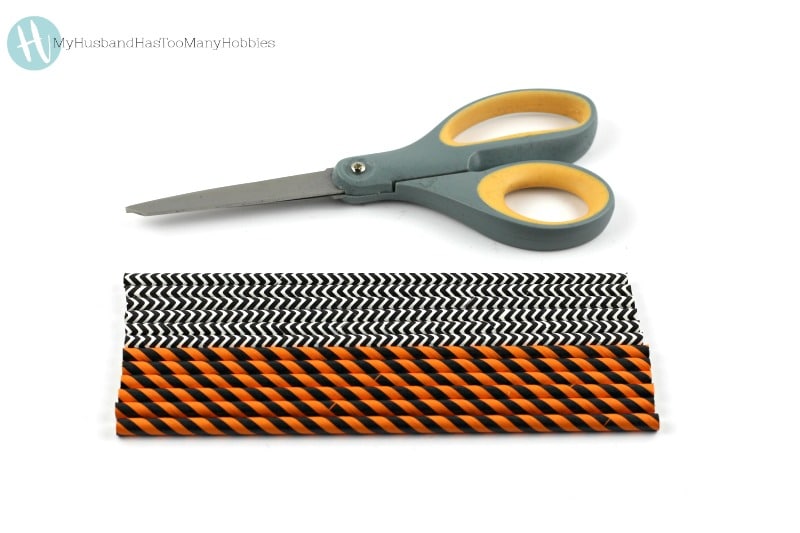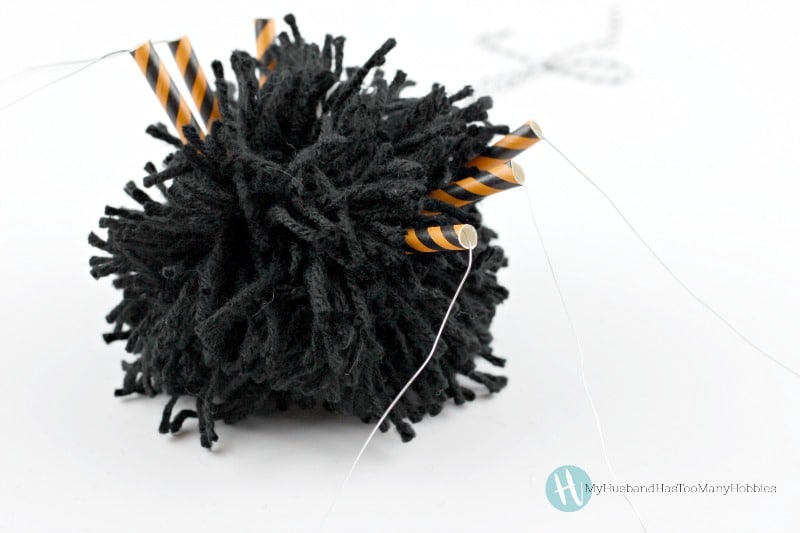Wrap a large amount of yarn around the rolls. Cut a length of black yarn and slide it between the toilet paper rolls and tie tightly around the center. At this point, if you also want to cut a length of the Bakers twine for hanging, tie it around the center now. If you just want to use the yarn for hanging, make sure that the length of yarn tied around the center will be long enough to use as a hanger.
We used Craft wire and cut long lengths of wire for the legs. Better to have more than you think you will need. Our wire was about 3-1/2 – 4 times the length of a paper straw. We bent the wire into an M shape. We used 3 wires for each spider. Yes, we are well aware that spiders have 8 legs, but we are using our creative license here and only have 6 legged spiders.
Feed the wire through the pom-pom, then string on the 2 inch paper straw. String on the longer piece of straw. If you bend is not in the right place, just re-bend the wire. To hold the straws on the wire, we attached the wooden beads at the end and looped the wire through the bead hole a couple of times. Trim wire as necessary.



